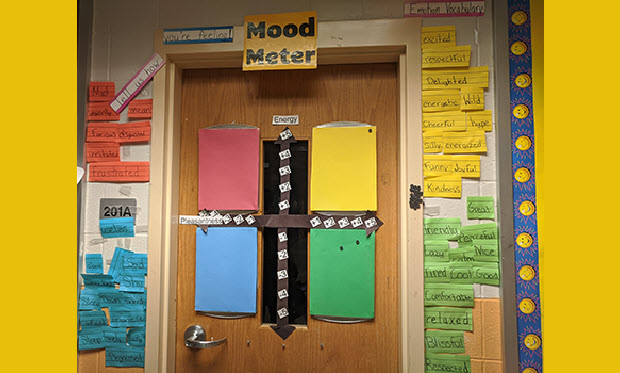In his first live webinar for CEA members, Yale Center for Emotional Intelligence Founder and Director Marc Brackett focused on helping teachers get a handle on their own feelings. This week he talked about how to help students learn to identify and regulate their own emotions.
Brackett has been leading discussions with educators as part of a CEA virtual series called Mindful Mondays. It includes live webinars and on-demand videos on a variety of topics to help teachers cope, thrive, and improve their lives—as well as those of their students—inside and outside the classroom. The series runs through early November.
In this week’s session Brackett told teachers that they’ll have the most success in helping students if they are in touch with their own emotions and ready to take on an emotion scientist mindset rather than becoming an emotion judge.
“We need permission to feel,” Brackett said. “We have to be self compassionate and nonjudgmental about our experiences.”
Brackett said teachers can start by being prevention focused. He encouraged educators to complete for themselves the phrase: My best self, in my role as an educator, has these three qualities .
“Let’s imagine you made a card with that phrase on it and you put it in your planner, you have it as your desktop, or you put it on your bedroom mirror, and it was an everyday reminder. Before you walked into your classroom you remember, and it might set you up for greater success.”
Brackett added that educators could ask their students to describe their best selves and have students keep the cards at their desks.
Other prevention strategies Brackett described included mindful breathing, connecting with others, and monitoring self-talk.
One thing Brackett asked teachers to avoid is venting. “It’s important to talk about your feelings and get things out, but when you only vent, it just keeps reminding you of all the things that are going wrong.”
If you catch yourself venting, Brackett recommends pausing and asking the person you’re talking to if they have any ideas for you or can offer support. He added, “If someone else is going on and on you might say, ‘Sounds like you’re having a really rough day. Imagine your best friend came up to you and said all these things that you’re saying. What would you say to that friend?'”
Brackett said that people find it easier to come up with ideas to support others than they do to generate advice for themselves. Educators can use this knowledge to help students. If, for example, a child is anxious about an upcoming test, a teacher can ask her what she would tell a friend in the same situation, and then ask her to reflect on that advice for herself.

The Mood Meter, part of RULER, an evidence-based approach to social and emotional learning developed by the Yale Center for Emotional Intelligence.
“Traditional” empathy is important, but Brackett said that teachers also need to engage in positive empathy, which is finding ways to recognize and share in positive experiences with students. “When we reflect on our childhood, we have more positive relationships with people who exhibited that positive empathy,” he said.
Brackett continued, “During difficult times, finding ways to embellish positive things can be very helpful. When a students does something really interesting or creative find ways to, not give false praise, but let the kid know you saw them.
When helping students learn the words to label their emotions, Brackett recommends having students first brainstorm words for the feelings they know, and them place them on a blank mood meter. “Then as you’re doing a read aloud,” he recommends, “If the word jittery or jubilant comes up, start asking questions. ‘Where do you think jubilant fits on the quadrant?’ It’s an organic process toward teaching emotional vocabulary.”
To take it another step farther, Brackett said that teachers can go on to do a character analysis with the mood meter. “One teacher did an excellent lesson on The Boy in the Striped Pajamas and mapped the emotions of characters in the book as well as the strategies for how characters regulated their emotions.”
Click here to register for upcoming Mindful Monday sessions and watch previously recorded webinars.







